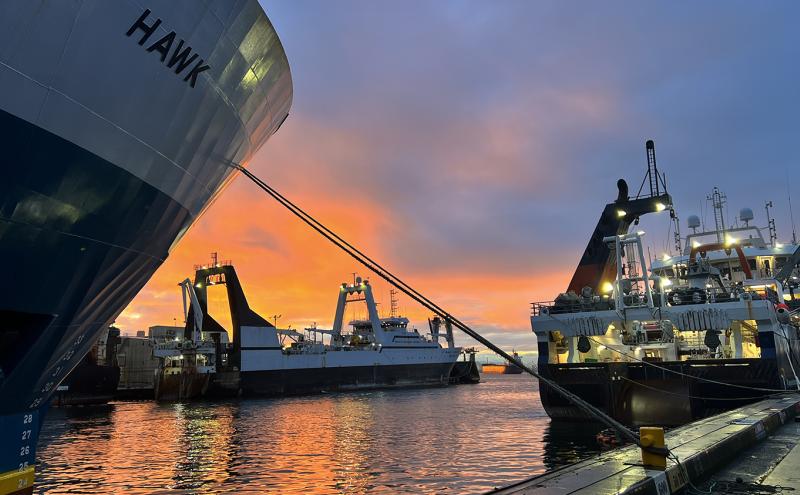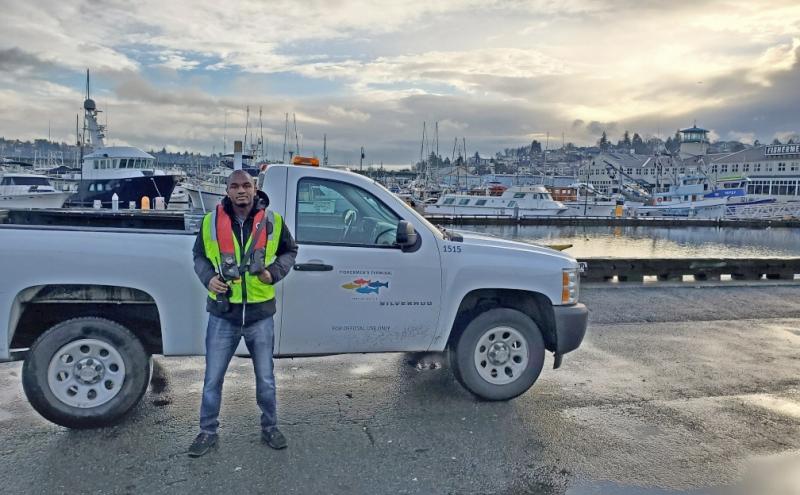
Eric Soderlund is a key member of the small but mighty operations team managing the Port of Seattle’s Terminal 91 property, several berths along Seattle’s waterfront, and 10 properties along the Duwamish River.
Once an operations manager for a fishing company with vessels moored at Terminal 91, Eric has moved from a customer to a landlord role as maritime operations manager for the Port of Seattle. He works with customers and tenants who make their permanent or temporary homes at Terminal 91, from commercial fishing companies to tug and barge operators, small cruise companies, ships of state (U.S. Navy and the Canadian Navy), university and government research vessels, and even the occasional super yacht.
Kelli Goodwin, senior maritime operations manager; Kathy Goodman, maritime operations manager; and billing analyst and admin Ester Suan-Tjoe round out the rest of the team that maintains Port properties and connects tenants and customers to the services they need.
Eric loves the view from his Pier 90 office, the salty sea breeze, and the opportunity to interact with cultures from all over the world working on the various vessels moored at Terminal 91. Here is how Eric spends a typical day on the waterfront!
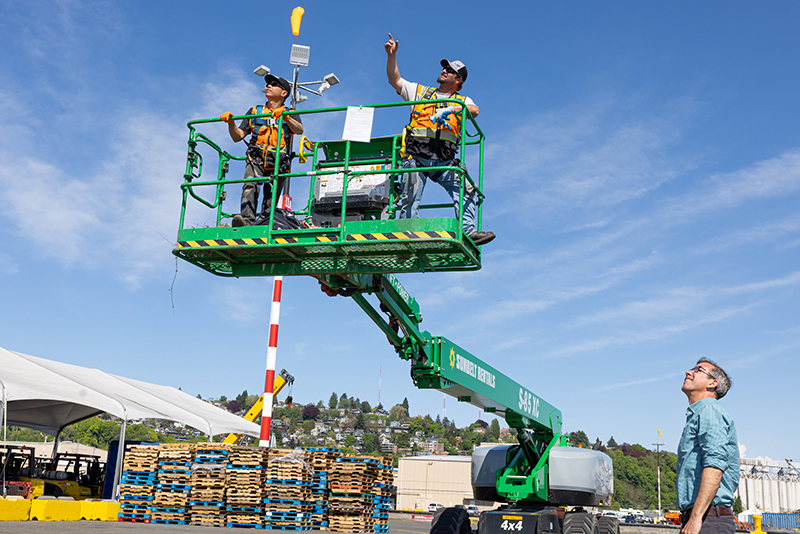
7:50 a.m.
I drive to Terminal 91 and roll the windows down as I drive over the West Magnolia flyover. I breathe in the sea air and check to see which vessels are in port today. The ships that are berthed at Terminal 91 and people who work from them bring a broad range of folks from across the country and all over the world. I enjoy being around the dynamic mix of cultures.
I’m in the middle of a two-week on call stint, which means I am available 24 hours a day to respond to after-hours berthing requests, impacts from other departments, or notification of an abandoned vessel. I share the on-call rotation with Kelli Goodwin and Kathy Goodman.
8:00 a.m.
As I drive onto the Terminal 91 property I check with the security guards on anything that may have happened overnight or on the weekend. Once I’m in my office I catch up with the rest of my team to make sure I am up to speed. I can really smell that ocean scent when I open a window in my office or take a step outside. Every day at the Port is an adventure, especially when the tugboats shake the room a little bit with their engines.
9:00 a.m.
After my morning coffee, I drive a Port vehicle around the property and along the piers, making sure our customers (like commercial fishing vessels) are following environmental best practices. There are strict environmental protocols and guidelines in place to protect Elliot Bay that limit ship work that can be done while at berth and mitigate environmental risks. I watch out for any facility repairs that might need to be made, like potholes, signage, or issues with the cranes stored on site.
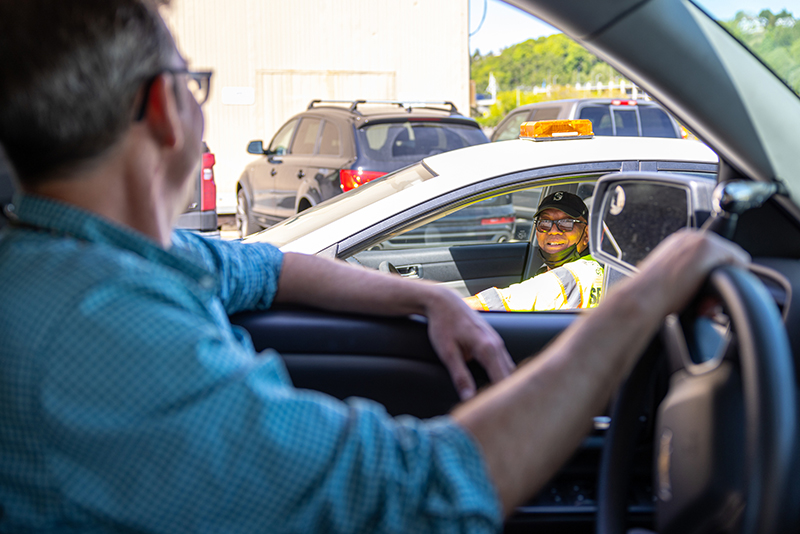
11:00 a.m.
I inform our tenants and customers about any potential impacts while they are in port. For example, I hear divers will be in the water inspecting hulls of ships at the same time barges are getting moved for the cruise lines, so I let everyone know to ensure everyone stays safe. I often act as an intermediary between customers or tenants. Today, a customer wants to bunker (load fuel on the ship) and we need to inform neighboring ships that is happening. I love solving problems for our customers. In my previous role in the fishing industry I was able to view Port operations from our customers’ perspectives. This perspective is helpful now in my daily work supporting our customers.
2:00 p.m.
I help coordinate vessel requests for berthing reservations and water and electrical hookups as well as provide logistical advice.
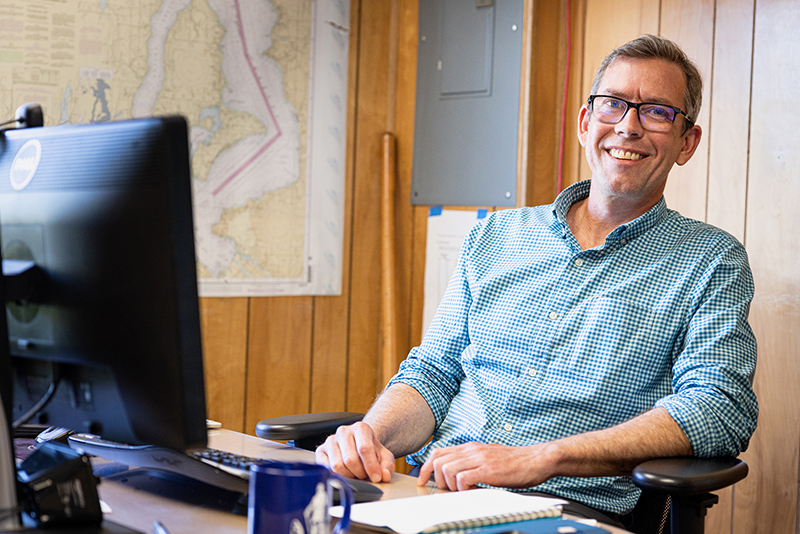
3:00 p.m.
I regularly meet with groups across the Port whose work intersects with ours to work on projects to repair and improve the facilities we manage. My team works closely with the Port’s Facilities Maintenance team and the trades, the Security team, the Stormwater and Environmental teams, and the Cruise team.
Today, I join a meeting with the Port’s Environment and Sustainability team to discuss the future development of Terminal 91 and onsite decarbonization plans. Over the years, I have been impressed by the commitment to sustainability in the maritime world. My career path started in environmental science and fisheries research. Initially I had the misconception that most maritime industries, such as seafood and shipping, had little concern for sustainability and environmental protection and only cared about turning a profit. I’ve learned that in reality, these businesses recognize that environmental protection and sustainability are key for their continued success. There are many industry-led programs creating rules and incentives to ensure they are meeting — or even exceeding — federal and state environmental rules.
5:00 p.m.
I head out at the end of the day. I’m hoping for a quiet evening as I continue my on-call rotation.


